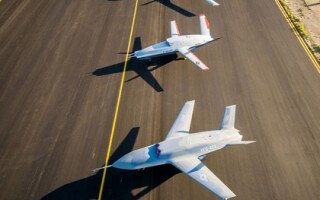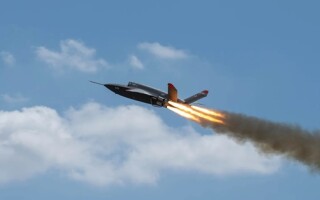Funding for radar, electronic warfare, C4ISR, in DoD budget request
StoryApril 13, 2016
The president’s Fiscal Year (FY) 2017 budget request for the U.S. Department of Defense (DoD) means that the nation has had back-to-back years with a budget increase, a nice change after the budget constraints and sequestration seen earlier this decade. Increased funding for radar, electronic warfare (EW), and communications programs, as well as a significant bump in cybersecurity, promise growth for defense electronics suppliers.
The total FY 2017 budget request is $582.7 billion, up $2.4 billion from the $580.3 billion enacted in FY 2016. The FY 2017 budget also “complies with the Bipartisan Budget Act of 2015, giving the department both funding stability and protection from the damage of sequestration in FY 2016 and FY 2017,” according to the DoD. The overall Research, Development, Test, & Evaluation (RDT&E) budget for FY 2017 is $71.765 billion, an increase over the FY 2016 enacted total of $69.968 billion. Funding dropped slightly, however, for the DoD’s Science and Technology program, from $13 billion in FY 2016 to $12.5 billion for FY 2017.
Designers of embedded computing, signal processing, open architectures, and other commercial off-the-shelf (COTS) solutions should find a steady market as the DoD’s missions continue to rely more and more on cyber; command, control, communications, computers, intelligence, surveillance and reconnaissance (C4ISR); radar; and EW systems both on battlefields and during peacetime. Below are key areas within the DoD budget that leverage embedded hardware and software.
Cybersecurity
Cyber operations get a $900 million increase in the FY 2017 budget program, with a total of $6.7 billion requested. For more on the DoD’s cyber strategy, visit http://bitly.com/1Usabu0.
EW RDT&E
Total EW funding in the FY 2017 RDT&E budget is $298 million, more than $100 million over the FY 2016 enacted total of $184 million. The Navy gets most these funds, with $183 million requested for the service. The Army and Air Force are slated to receive $102.5 million and $12.5 million, respectively. Procurement for the Navy’s AN/SLQ-32 Electronic Warfare Suite is down slightly from the FY 2016 enacted total of $296 million, to about $275 million.
Radar
RDT&E funding for radar programs comes in at about $755 million for FY 2017, down about $5 million from the FY 2016 enacted total of $760 million. Key programs getting FY 2017 RDT&E funding include Air and Missile Defense Radar (AMDR) at $144.3 million, Ground/Air Task Oriented Radar (G/ATOR) at $83.538 million, and Three Dimensional Long-Range Radar (3DELRR) at $49.5 million.
Radar program procurement for the FY 2017 RDT&E request comes in at about $560 million, a slight decrease over the FY 2016 enacted total of $568 million. Counterfire radars for the Army top the radar procurement request at $314 million, an increase of more than $100 million over the FY 2016 enacted total of $198 million.
The continued investment in radar and EW systems will empower the military radio frequency (RF) and microwave market. “I actually think the overall aerospace and defense market will be flat to growing at a slight percentage, but RF content in this market will continue to expand faster than the market itself,” says Doug Carlson in an interview with the McHale Report this month (go to http://bitly.com/1QIYwks).
Communications and networking
Two key programs focused on communications and networking are the Warfighter Information Network-Tactical (WIN-T) and the Handheld, Manpack, and Small Form Fit (HMS) program: Each receives funding in the FY 2017 budget, but only HMS gets an increase
The FY 2017 WIN-T request procures and fields 283 Battlefield Video-Teleconferencing Center III systems and provides program management support for Single Shelter Switch, High Capability Line of Sight, and Troposcatter Communications systems as they transition to sustainment by the end of FY 2017. Total funding in this area – procurement, research, and development – in FY 2017, however, drops from $771 million in FY 2016 to $462 million.
HMS, which consists of the Rifleman Radio, the Manpack Radio, and the Small Form Factor Radios, gets procurement funding for Rifleman and Manpack Radios, support equipment, fielding, nonrecurring engineering expenses, and platform vehicle integration. Total funding – procurement, research, and development – in FY 2017 rises for HMS from $59 million in FY 2016 to $292 million.
These numbers indicate healthy demand for embedded computing technology for military systems. However, uncertainty still reigns. I’m writing this on Super Tuesday: Hillary Clinton and Donald Trump are set to sweep the Democrat and Republican primaries, respectively. Democratic presidents are traditionally not as pro-defense spending as Republicans and Trump is an unknown at this point. So enjoy the funding increase for now.
For a distraction from the crazy election atmosphere, read the budget documents in full at http://comptroller.defense.gov/BudgetMaterials.aspx. By the time you’re done reading, we may have a new president.








